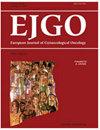基于网络药理学的知母治疗卵巢癌的作用机制研究
IF 0.5
4区 医学
Q4 OBSTETRICS & GYNECOLOGY
引用次数: 0
摘要
本研究旨在利用网络药理学方法探讨知母治疗卵巢癌的作用机制。在Man数据库中使用DisGeNET和在线孟德尔遗传筛选OC靶点。利用中药系统药理学、UniProt数据库和venny2.1.0对常见OC和芝母靶点进行鉴定。在相互作用基因/蛋白质检索工具数据库中,利用知母/OC靶点和知母活性成分-靶点-通路网络在Cytoscape 3.9.1软件中建立了蛋白质-蛋白质相互作用(PPI)网络。利用metscape数据库进行基因本体(GO)和京都基因与基因组百科全书(KEGG)途径富集分析。总的来说,除了93个相关目标外,还确定了15种有效成分。PPI网络有52个与之重叠的靶点,其中最相关的10个靶点分别是肿瘤蛋白p53、肿瘤坏死因子、丝氨酸/苏氨酸激酶1、血管内皮生长因子A、caspase-3、前列腺素G/H合成酶-2、缺氧诱导因子-1 α、白细胞介素-1 β、热休克蛋白90 α和孕酮受体。根据GO和KEGG分析,Zhimu和OC将核因子NF-kappaB信号通路、氧化应激、晚期糖基化终产物(AGE)/晚期糖基化终产物(RAGE)信号通路的受体作为共同靶点。本研究突出了芝母的有效成分,并确定了其治疗OC的潜在分子治疗机制。为今后的分子机制研究提供了建议和方向。本文章由计算机程序翻译,如有差异,请以英文原文为准。
Study on the mechanism of Zhimu in the treatment of ovarian cancer based on network pharmacology
We aimed to investigate the mechanism of action of Zhimu in the treatment of ovarian cancer (OC) using network pharmacology. OC targets were screened using the DisGeNET and Online Mendelian Inheritance in Man databases. Common OC and Zhimu targets were identified using the Traditional Chinese Medicine System Pharmacology, UniProt databases, and Venny 2.1.0. The protein-protein interaction (PPI) network in the Search Tool for the Retrieval of Interacting Genes/Proteins database was created using Zhimu/OC targets and a Zhimu active ingredient-target-pathway network in the Cytoscape 3.9.1 software. Gene Ontology (GO) and Kyoto Encyclopedia of Genes and Genomes (KEGG) pathway enrichment analysis were conducted using the Metascape database. And overall, 15 active ingredients in addition to 93 related targets were identified. The PPI network had 52 targets that overlapped with it, with the 10 most relevant targets being the tumour protein p53, tumour necrosis factor, serine/threonine kinase 1, vascular endothelial growth factor A, caspase-3, prostaglandin G/H synthase-2, hypoxia-inducible factor-1 alpha, interleukin-1 beta, heat-shock protein 90-alpha, and progesterone receptor. According to GO and KEGG analyses, Zhimu and OC had the nuclear factor NF-kappaB signalling pathway, oxidative stress, and the advanced glycation end product (AGE)/the receptor for the advanced glycation end product (RAGE) signalling pathway as common targets. This study highlighted the active ingredients in Zhimu and identified potential molecular therapeutic mechanisms for the treatment of OC. It also provided suggestions and directions for future research into molecular mechanisms.
求助全文
通过发布文献求助,成功后即可免费获取论文全文。
去求助
来源期刊
自引率
25.00%
发文量
58
审稿时长
1 months
期刊介绍:
EJGO is dedicated to publishing editorial articles in the Distinguished Expert Series and original research papers, case reports, letters to the Editor, book reviews, and newsletters. The Journal was founded in 1980 the second gynaecologic oncology hyperspecialization Journal in the world. Its aim is the diffusion of scientific, clinical and practical progress, and knowledge in female neoplastic diseases in an interdisciplinary approach among gynaecologists, oncologists, radiotherapists, surgeons, chemotherapists, pathologists, epidemiologists, and so on.

 求助内容:
求助内容: 应助结果提醒方式:
应助结果提醒方式:


